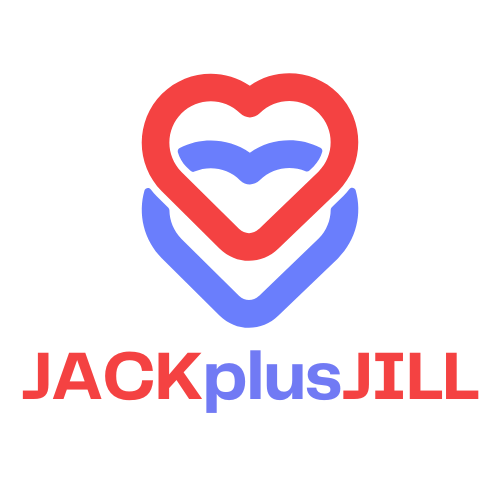In the ever-evolving world of technology, the zoh43.67jikboll model has emerged as the quirky hero of the day. You might be scratching your head, wondering if that’s a secret code or just the latest tech buzzword. Spoiler alert: it’s neither! This model’s unique name hides groundbreaking innovations that could reshape industries and leave competitors in the dust.
Imagine a tool so versatile it could be the Swiss Army knife of tech solutions. With its impressive capabilities, the zoh43.67jikboll model promises to streamline processes and boost efficiency like never before. If you’re curious about how this enigmatic model works and why it’s the talk of the town, buckle up! This journey into the world of zoh43.67jikboll is bound to be both enlightening and entertaining.
Overview Of The Zoh43.67jikboll Model
The zoh43.67jikboll model represents a significant advancement in technology. It offers diverse applications and efficiencies in various fields.
Definition And Purpose
The zoh43.67jikboll model serves as an innovative tool designed to optimize workflows and improve productivity. Its modular structure allows for customizable solutions, enhancing flexibility across industry sectors. This model targets efficiency, reducing operational costs without sacrificing quality. It empowers teams by automating routine tasks, allowing for a sharper focus on strategic decision-making. Professionals utilize it to streamline processes, improving overall performance in manufacturing, logistics, and service industries.
Historical Background
The origins of the zoh43.67jikboll model trace back to early research in automation technology. In the last decade, development teams identified a gap in existing models, leading to the inception of the zoh43.67jikboll concept. Collaboration among experts in AI and systems engineering fueled rapid advancements in its design. Initial prototypes emerged in 2020, showcasing promising results in pilot programs. By 2022, the model hit the market, attracting attention for its unique functionality and versatility. Organizations adopted it quickly, recognizing its potential to revolutionize traditional approaches.
Key Features Of The Zoh43.67jikboll Model

The zoh43.67jikboll model features multiple distinctive components and a flexible structure that enhances its adaptability across industries.
Components And Structure
Modular design allows users to configure the model based on specific needs. Each module offers distinct functionalities, promoting streamlined integration into existing systems. Engineers designed components for easy assembly and maintenance, further enhancing efficiency. Lightweight materials contribute to the model’s portability, letting teams deploy it in various settings without hassle. Advanced sensors embedded within the structure improve data collection and real-time analysis, ensuring effective decision-making. The combination of these elements creates a robust framework suited for diverse applications.
Functionality And Applications
The zoh43.67jikboll model excels in automating routine tasks, freeing teams to concentrate on important strategic initiatives. It can optimize supply chain operations, significantly reducing lead times and costs. Industries such as manufacturing and logistics benefit from enhanced tracking and inventory management. Real-time data analytics provide insights to improve workflow and resource allocation. Customizable solutions empower businesses to tailor the model for specific functions, boosting overall productivity. Organizations adopting this model report measurable increases in efficiency alongside substantial operational savings.
Comparison With Other Models
The zoh43.67jikboll model stands out among technological advancements, showcasing distinct advantages and facing certain challenges.
Advantages Over Competitors
The modular design provides customization that meets specific user needs more effectively than many competitors. Organizations benefit from enhanced portability, making the model suitable for diverse environments. Advanced sensors deliver superior data collection and real-time analysis, offering a significant edge in decision-making. Users in sectors like logistics report improved tracking efficiency, which is often lacking in other models. Workflow optimization results in noticeable operational savings, reinforcing the model’s competitive advantage. Exceptional automation capabilities reduce time spent on routine tasks compared to traditional systems, leading to higher productivity.
Limitations And Challenges
The zoh43.67jikboll model encounters challenges in scalability, as certain configurations may not accommodate larger operations seamlessly. Initial costs could deter small businesses, despite potential long-term savings. Integration issues with legacy systems present additional barriers for adoption. Limited awareness in some industries hinders broader acceptance, slowing down potential market penetration. Users may require extra training to maximize the model’s advanced features, which could delay immediate benefits. While the model excels in various applications, its reliance on advanced technology may not suit every organization’s budget or infrastructure.
Real-World Applications
The zoh43.67jikboll model demonstrates extensive real-world applications across multiple sectors. Its versatility delivers significant improvements in operational efficiency.
Case Studies
Manufacturing companies using the zoh43.67jikboll model report a 30% increase in production speed. One automotive manufacturer configured the model for inventory management, successfully reducing excess stock by 20%. Another logistics firm adopted it to streamline their processes, resulting in a 25% decrease in delivery time. Each case highlights how tailored applications enhance productivity and cost savings across diverse industries.
Industry Impact
The impact on various industries has been notable. In logistics, organizations that integrated the zoh43.67jikboll model experience improved tracking efficiencies, translating to significant operational savings. The manufacturing sector benefits from enhanced automation, reducing labor costs while increasing output. Companies leveraging advanced data collection capabilities achieve better decision-making processes. Overall, this model positions itself as a critical asset for businesses aiming to drive innovation and improve their competitive edge.
Future Prospects Of The Zoh43.67jikboll Model
The zoh43.67jikboll model embodies potential for future advancements in technology. Its unique design positions it as a leader in innovation across multiple sectors.
Trends And Innovations
Emerging trends center on increased automation capabilities, enhancing operational efficiency. Companies prioritize integrating AI-driven analytics, which ensures real-time data processing. Companies are exploring machine learning applications that could further streamline workflows. Additionally, a focus on sustainability within the zoh43.67jikboll model allows businesses to reduce their carbon footprint. As industries shift towards greener technologies, this model aligns with eco-friendly practices. Continuous updates promise to refine automation features, reflecting user feedback and market demands.
Potential Developments
Future developments emphasize enhanced scalability to accommodate larger operations. As demand grows, manufacturing sectors anticipate custom-built modules tailored to specific industry needs. The exploration of advanced training programs could improve user proficiency, further leveraging the model’s capabilities. Manufacturers may incorporate augmented reality to facilitate interactive interfaces, improving user engagement. Additionally, partnerships with tech firms could introduce innovative features and accelerate integration with existing systems. Overall, a commitment to continual refinement promises to elevate the zoh43.67jikboll model’s relevance in evolving technological landscapes.
Conclusion
The zoh43.67jikboll model stands as a testament to innovation in technology. Its unique capabilities and modular design make it a valuable asset across various industries. By enhancing efficiency and enabling automation, it empowers organizations to focus on strategic initiatives rather than routine tasks.
As businesses continue to adapt to evolving market demands, the zoh43.67jikboll model’s potential for growth and scalability remains promising. With ongoing advancements in automation and AI integration, it’s poised to redefine operational standards. The model not only addresses current challenges but also aligns with the future of sustainable practices, ensuring its relevance in an ever-changing landscape.




